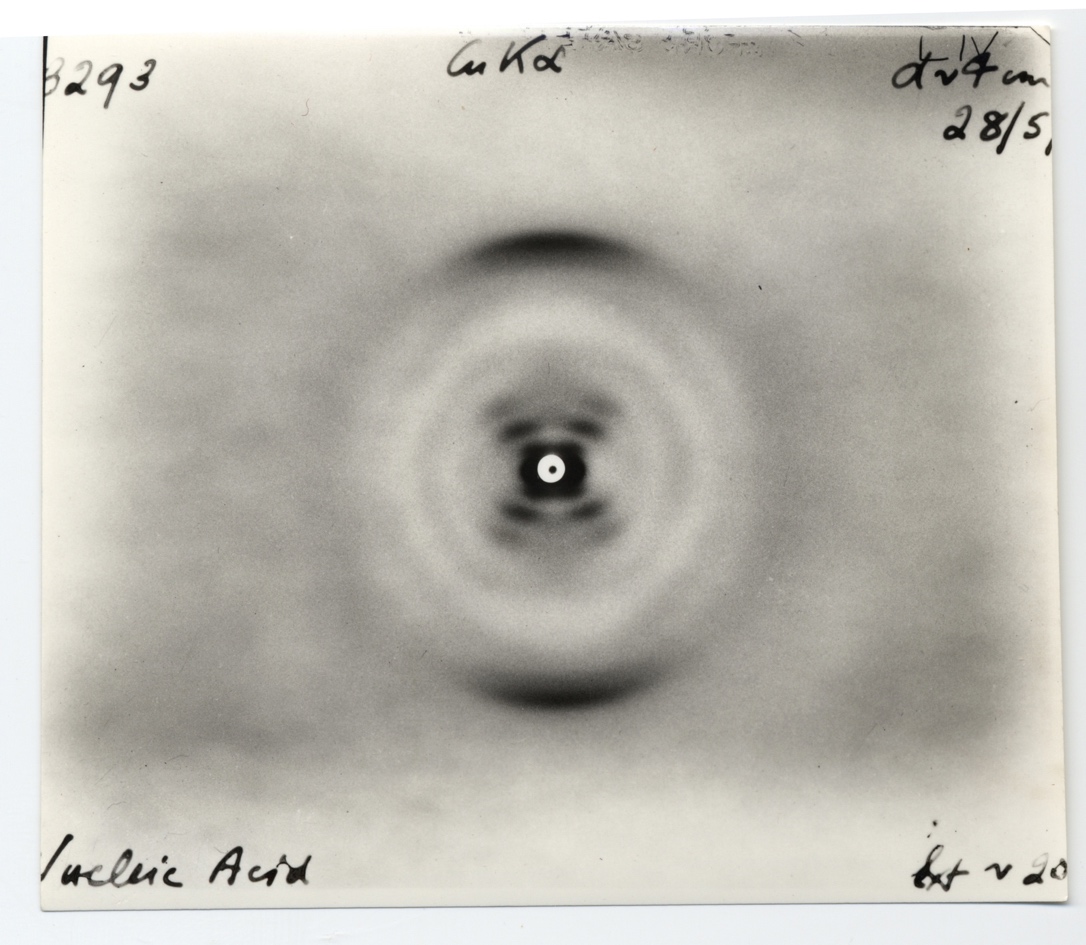It may look as if it should be hanging in a gallery of Modern Art, but ‘Photo 51’ taken by the scientists Rosalind Franklin and her PhD student Raymond Gosling in 1952 has been called ‘one of the most important photographs in the world’ and in recognition of its importance, the Royal Mint have announced the release of a commemorative 5op coin in honour of Franklin which depicts the famous image.
The image shows the pattern made when X-rays are scattered by DNA and when scientist James Watson first saw the striking arrangement of black spots in the form of a cross at the centre of the image, he said that his mouth fell open and his pulse began to race.
Watson knew that the cross-shaped pattern gave him a vital clue to solving the structure of DNA – hence his racing pulse. But while Franklin’s image was a crucial clue, neither she nor Watson were the first to have seen this striking pattern – for a year earlier, someone else had already taken an identical image.
Working at the University of Leeds, William Astbury and Florence Bell had pioneered the X-ray methods that Franklin used to take ‘Photo 51’. Why then, when Astbury and his colleague Elwyn Beighton obtained an identical image in 1951 (shown above), a year before Franklin, was it simply filed away to lie undiscovered for another forty years? And how differently might history have unfolded had Astbury shown this photo to his friend the scientist Linus Pauling when he visited Astbury at his home in Headingley in 1952?…The full story of this intriguing and unknown episode in the story of DNA is told in ‘The Man in the Monkeynut Coat’…
